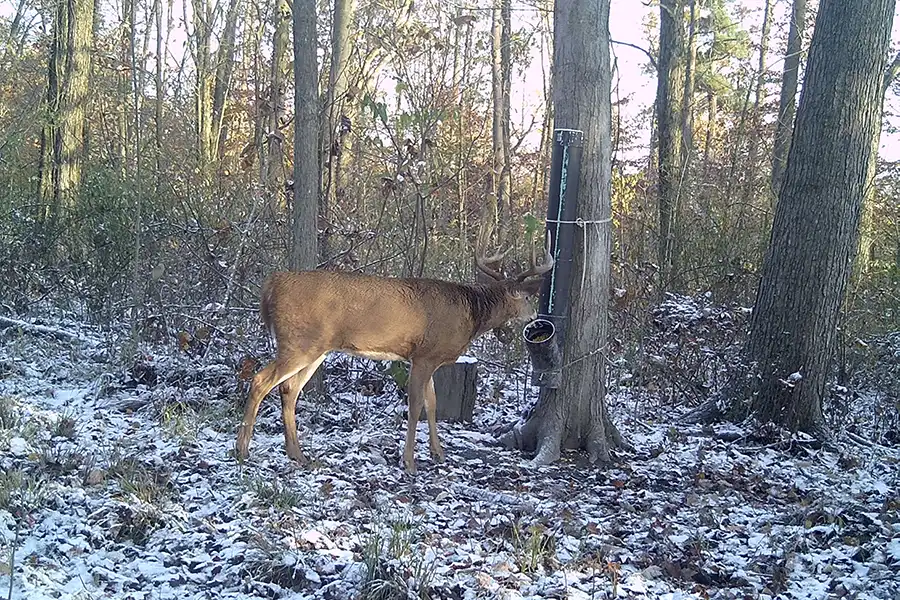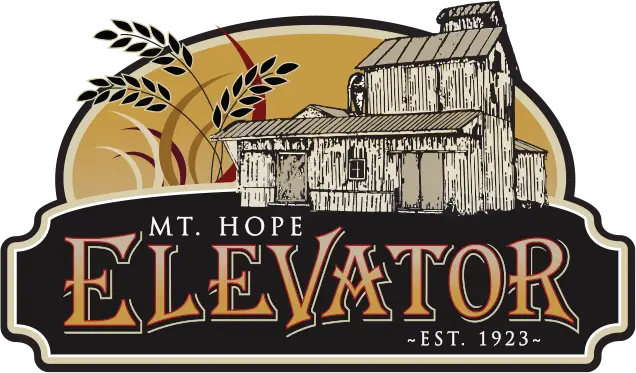3 Mistakes People Make When Feeding Deer (and How to Avoid Them)
Feeding deer—not to be confused with baiting—can be a rewarding way to attract wildlife, improve herd health, and improve your odds come hunting season. But a few common deer feeding mistakes could be sabotaging your efforts. Whether you’re new to deer feeding or fine-tuning your setup, here are three mistakes to avoid.
1. Feeding the Wrong Thing
It’s tempting to dump a pile of corn and call it done. But while deer love corn, it’s high in carbs and low in protein, which makes it a poor choice for supporting antler growth, healthy fawns, and overall herd health.
Corn does have value in late winter when deer need quick energy, but it lacks the nutritional balance required during spring and summer—especially for growing antlers and lactating does.
The Fix: Choose a balanced feed like KBO Crunch Extreme, available right here at Mt. Hope Elevator. It provides the ideal protein-to-fat ration and is fortified with HD200 to deliver the right vitamins and minerals that deer crave—plus, it smells great and keeps them coming back.
2. Inconsistent Feeding
Many people start feeding deer in the fall when trail cameras pick up movement and the rut is around the corner. But when the season ends, so does the feed. Or they forget to refill feeders for weeks at a time, especially during the hot summer months or after the snow melts. This inconsistency can disrupt patterns and limits the benefits of your program.
The Fix: Consistency is key. Feeding the right feeds year-round can improve overall condition of the herd, support antler growth, and boost reproductive health. Providing supplemental feed through all four seasons builds trust and encourages deer to make your property part of their regular route.
3. Poor Placement
Dumping feed in open fields or near high-traffic areas can make deer anxious and reduce visits. And if your site sits in a low, soggy spot? Moisture can spoil feed fast—inviting mold, waste, and lower feed efficiency. Also consider your access point—choose a spot that’s easy to refill without disturbing the deer.
The Fix: Set up your feeding station in a shaded, quiet spot near natural cover where deer feel safe. Elevate the feed if possible, using feeders or troughs to keep it clean and dry. The best feeders are high enough that they can’t be raided by raccoons or squirrels, which can put a sizeable dent in any feed budget.
Conclusion
Feeding deer isn’t just about dumping a bag and walking away. Done right, it helps improve herd health, boost antler growth, and bring more wildlife to your backyard or hunting grounds.
Want to avoid deer feeding mistakes and build a smarter program? Stop by or contact Mt. Hope Elevator and ask about KBO Crunch. We’ll help you choose the right feed and setup for your goals.
*Become familiar with the laws in your state regarding baiting deer or hunting over bait.

